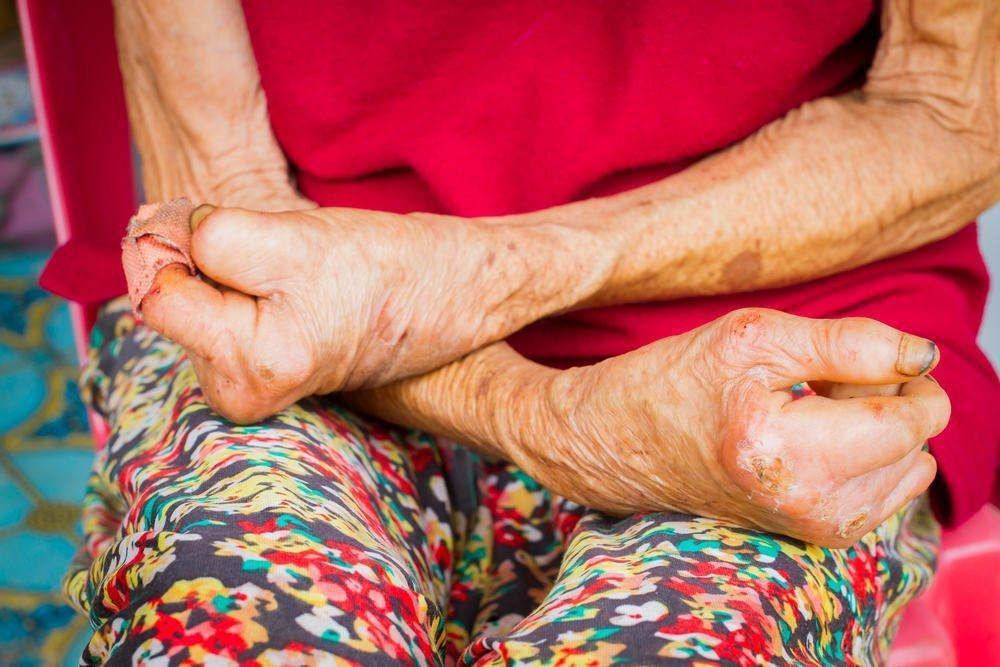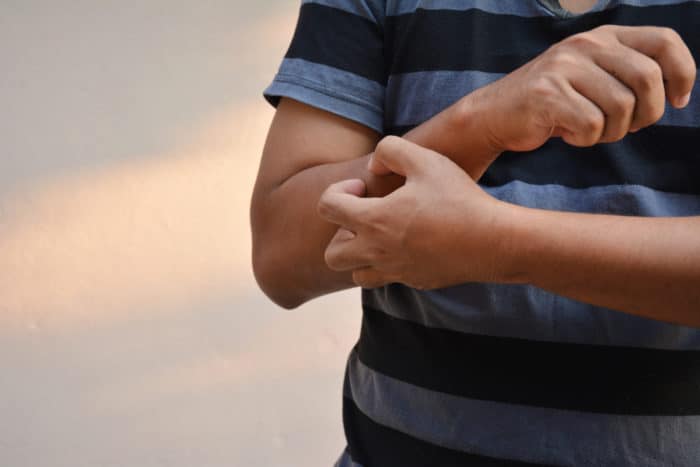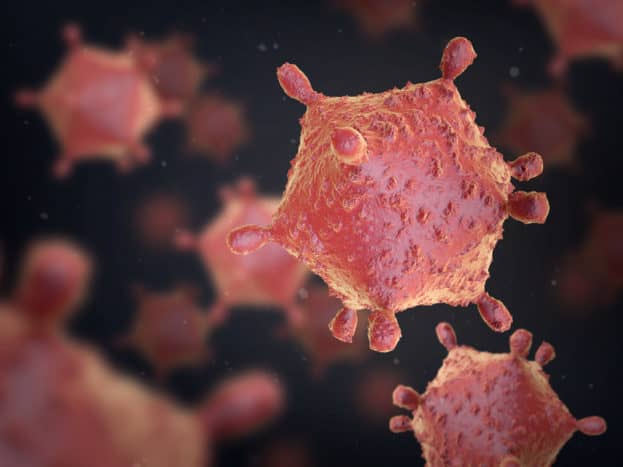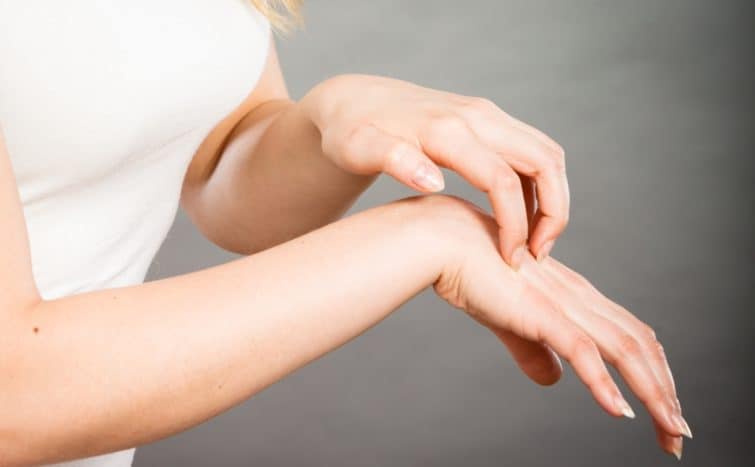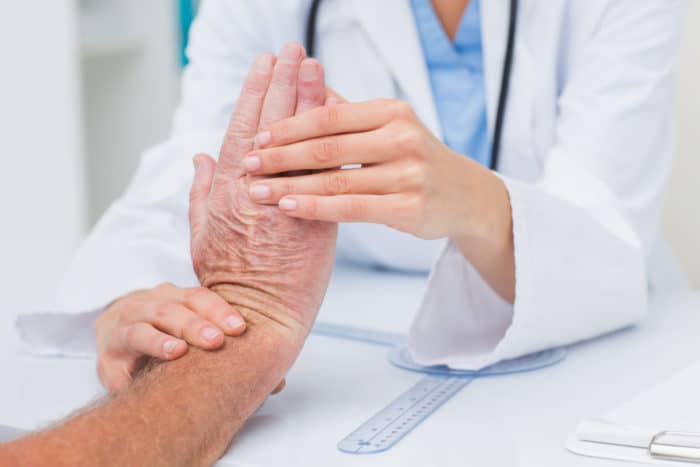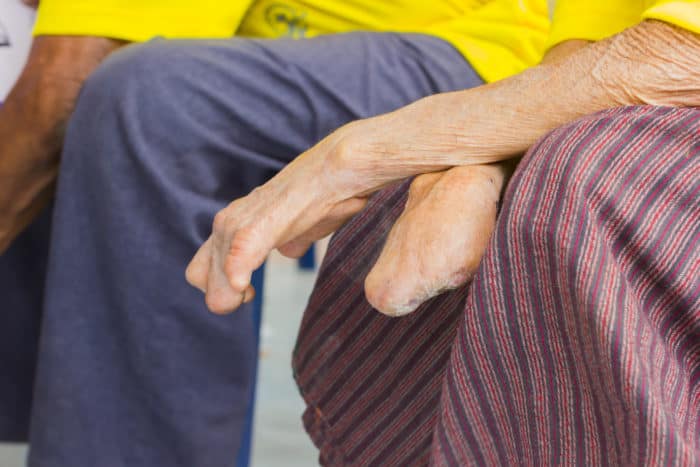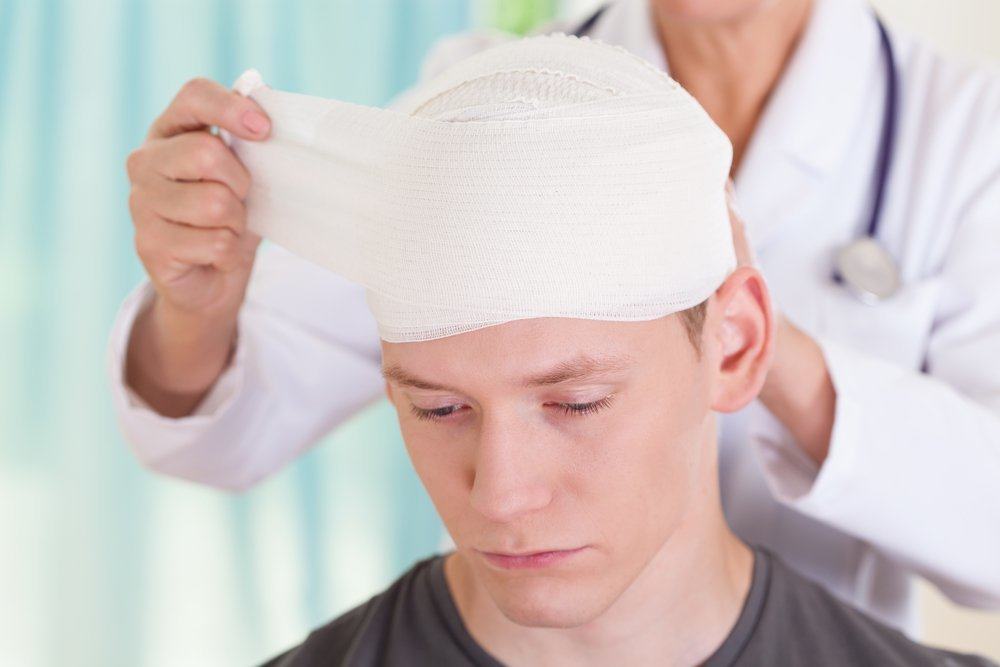Contents:
- Medical Video: Leprosy: Symptoms, Pictures, Types, and Treatment
- What causes leprosy?
- How can leprosy occur?
- 1. Bacteria enter the body
- 2. The immune system reacts
- The development of this disease depends on how strong your immune system is
- What are the signs and symptoms of leprosy?
- What should I do if I find signs and symptoms of leprosy?
- How do you treat this skin infection?
- The most important thing is to take leprosy medication regularly
- What happens if the disease is not treated?
- The type of leprosy defect that you need to be aware of
- 1. Primary defect
- 2. Secondary defects
- The severity of leprosy defects
Medical Video: Leprosy: Symptoms, Pictures, Types, and Treatment
Leprosy, better known as Morbus Hansen or leprosy is a chronic skin infection caused by bacteriaMycobacterium leprae. Leprosy is one of the oldest diseases in history, known since 1400 BC. This infection attacks the peripheral nerves and skin, then the upper respiratory tract, and can also attack other organs except the brain.
The number of people with leprosy in the world in 2007 was estimated at more than 2-3 million people. In 2008, people with leprosy in Indonesia were estimated at 22,359 or 0.73 cases out of every 100,000 population, with the number of new cases as many as 16,668. This disease is found mainly in the islands of Java, Sulawesi, Maluku and Papua.
Leprosy is one of the dreaded diseases because it can cause disability, mutilation (such as a break in one limb like a finger), ulceration (ulcers), and others. This skin infection is caused by damage to large nerves in the face, limbs, and motor areas; followed by numbness accompanied by muscle paralysis and reduced muscle mass.
What causes leprosy?
The cause of leprosy is bacteriaMycobacterium leprae. These bacteria are transmitted through prolonged and close skin contact with sufferers. Another assumption states that this disease can also be transmitted through inhalation or breathing air, because of bacteria the cause of leprosy can live several days in the form droplet (water granules) in the air.
The bacteria that cause leprosy can also be transmitted through direct contact with certain animals such as armadilo. This disease requires considerable incubation time, between 40 days to 40 years, on average it takes 3-5 years after contracting until the onset of symptoms.
About 95 percent of people are immune to the bacteria that causes leprosy, and only about 5 percent can get the bacteria. Of the 5 percent of people who contract the bacteria that causes leprosy, about 70 percent are cured themselves, and only 30 percent are leprosy. That is, of the 100 people infected with this bacterium, only 2 people will fall ill.
How can leprosy occur?
Here are some steps to developing leprosy that you need to see and know:
1. Bacteria enter the body
At first the bacteria that causes leprosy will enter the nose and then the human respiratory organs. After that, the bacteria will move to the neural network and enter the nerve cells. Because the bacteria that cause leprosy like places with cold temperatures, the bacteria will enter the peripheral nerve cells and nerve cells of the skin that have colder temperatures, for example around the groin or scalp.
Then the bacteria that causes leprosy will make nerve cells as 'home' and begin to multiply in them. This bacterium takes 12-14 days to split into two. Usually at this stage, someone who is infected has not yet seen the symptoms of leprosy in plain view.
2. The immune system reacts
Over time, the bacteria that cause leprosy will develop more and more. Automatically, the immune system naturally strengthens its defense. White blood cells which are the main protective force of the body are produced more and more to attack the bacteria that cause leprosy.
When the immune system attacks bacteria, leprosy symptoms can be seen on the body, such as the appearance of white patches on the skin. At this stage, symptoms of leprosy such as numbness have begun to appear. If the symptoms of leprosy are not immediately treated, the bacteria will quickly cause various other disorders in the body.
The development of this disease depends on how strong your immune system is
The bacteria that cause leprosy are indeed automatically attacked by the human immune system. However, each person's immune system is different. When a person has a strong immune system, bacteria may not cause symptoms that are too severe.
Even so, the bacteria that cause leprosy still cause damage to the skin tissue and cause numbness.
Meanwhile, in people with weakened immune systems, they may be more prone to skin infections. Usually, this condition will cause skin infections of the nerves, eyes, kidneys, muscles, and blood vessels.
What are the signs and symptoms of leprosy?
This disease consists of two types, namely dry leprosy or basiler pausi (PB) and wet or multi basiler leprosy (MB). The appearance of white spots like phlegm is usually a symptom of dry leprosy. While the symptoms of wet leprosy are more like ringworm, which is reddish patches and accompanied by thickening of the skin.
The other most basic symptoms of leprosy are numbness or numbness. This condition causes the sufferer to be unable to feel changes in temperature so that it loses touch sensation and pain to the skin. Well, this is what causes sufferers susceptible to disability because their nerves are damaged, so they don't feel pain even though their fingers break.
Apart from those mentioned earlier, some of the signs and symptoms of leprosy to look out for are:
- Dry skin, and in areas previously covered with hair or hair can fall out
- Eyelashes that fall out
- Weakness or muscle paralysis
- Change in face shape
- Mutilation, numbness causes the patient not to notice the existence of a wound, so that it can cause untreated wounds, ulcers
- Gynecomastia (breasts that grow bigger in men), due to a disruption of hormonal balance
- Weight loss
- Enlargement of peripheral nerves, usually around the elbows and knees
- Blisters or rashes
- A boil appears but does not hurt
- Nasal congestion or nosebleeds
- Wounds appear but don't hurt
Signs and symptoms of leprosy often resemble other diseases, and sometimes cause a late diagnosis, so the disease is also called the great immitator. Some diseases similar to leprosy are vitiligo, ptiriasis versicolor, ptiriasis alba, tinea corporis, and many more.
What should I do if I find signs and symptoms of leprosy?
Immediately consult your doctor if you find the above symptoms, the doctor will do an examination to make a diagnosis. Here are some checks that can be done:
- Bacteroscopic examination made from scrapings of skin tissue in several places, examined under a microscope to see the presence of bacteria M. Leprosy.
- Histopathological examination aims to see network changes due to infection.
- Serological examination based on the formation of antibodies in a person's body due to infection.
To be able to make a diagnosis, doctors usually look for 3 main signs (cardinal signs) from leprosy: numbness of skin abnormalities, thickening of the peripheral nerve, and positive results of bacterioscopic examination.
How do you treat this skin infection?
Leprosy is often considered a frightening disease. Even though as the medical world progresses, leprosy is an easily treated disease. Ironically, until now some regions in Indonesia are still considered as endemic areas of leprosy by the World Health Organization or WHO.
The main purpose of leprosy treatment is to break the chain of transmission, reduce the incidence of disease, treat and cure patients, and prevent disability. To achieve healing and prevent resistance, leprosy drugs will use a combination of several antibiotics called multi drug treatment (MDT).
The combination of leprosy drugs usually used in MDT therapy consists of dapsone, rifampicin, clofazamine, lamprene, ofloxacin, and / or minocycline. Vvariations of these antibiotics work to inhibit growth and kill bacteria M. Leprae. In addition, most leprosy drugs are also anti-inflammatory. Using antibiotics simultaneously at one time is also intended so that the bacteria are not immune to the drugs given so that the disease will also be quickly cured.
The doctor will determine the amount, type, and dosage of the drug according to the type of leprosy you have. The type of leprosy will also affect the length of treatment. Medicines for leprosy must be taken regularly, generally within 6 months to 1-2 years.
Thanks to MDT, the total cases of leprosy in the world in the last 20 years have fallen sharply to 90 percent. Nearly 16 million patients with this disease have fully recovered after undergoing treatment with antibiotics prescribed by doctors.
The most important thing is to take leprosy medication regularly
As explained above, people who have been diagnosed with this disease will usually be given a combination of antibiotics as a treatment step for six months to two years.
Non-discipline in taking medicine makes the bacteria that causes leprosy become stronger and immune to current and subsequent treatments. As a result, the symptoms of leprosy that you experience can get worse because the bacteria continue to multiply in the body.
Often forgetting or stopping taking medication also risks transmission of leprosy to other people. Not only makes the condition worse, the stronger bacteria can easily move and infect other people's bodies. It could be, the people closest to you get this disease later on if you don't routinely take leprosy medicine.
In addition to routinely taking leprosy medication as prescribed by the doctor, surgery can also be done as an advanced therapy to normalize damaged nerve function. Surgery is also done to improve the body shape of the person with disabilities and restore limb function.
What happens if the disease is not treated?
Leprosy is a disease that can be cured. With a note that patients do treatment routinely and thoroughly. Leprosy that is late detected or treated late can cause disability in patients, both temporary and forever.
The Indonesian government has freed treatment for this disease. So what are your reasons for not taking treatment?
The type of leprosy defect that you need to be aware of
Based on the National Guidelines for Leprosy Control Program issued by the National Ministry of Health, the disability due to this disease is divided into two, namely:
1. Primary defect
Primary defects are a type of defect caused directly by bacterial infection M. leprae inside the body. This type of defect causes sufferers to experience eye taste, dry and scaly skin and claw hand aka hands and fingers bent.
In primary defects, the appearance of skin spots similar to phlegm usually occurs quickly in a relatively short time. These spots gradually become inflamed, swell, and accompanied by symptoms of fever. In addition, boils that appear as a sign of symptoms of leprosy can rupture and develop into ulcers. Muscle weakness and numbness (numbness) usually occur within the last six months since exposure to the initial infection.
If you experience the symptoms above, immediately check with your doctor to get the best treatment.
2. Secondary defects
Secondary defects are the development of primary defects, especially those caused by nerve damage. This nerve damage can cause ulcer ulcers (open sores on the skin or ulcers) and limited joint motion. This occurs as a result of functional damage to the joints and soft tissues around the infected area.
Disability at this stage occurs through two processes, namely:
- There is a direct flow of bacteria M. leprae to the peripheral nervous system and certain organs
- Through leprosy reaction
If the bacteria has entered the nerve, nerve function will gradually decrease or even disappear. In general, nerves function as sensory, motor, and autonomic. Abnormalities that occur due to one skin infection can cause interference with each nerve or a combination of the three. Here are some disorders or abnormalities in each nerve due to leprosy:
- Motor nerve disorders. Motor nerves function to provide strength to the muscles. Disorders or abnormalities in the motor nerve can be paralysis of the hands and feet, fingers and toes bent, and eyes cannot blink. If the infection occurs in the eye, the patient can experience blindness.
- Sensory nerve disorders.Sensory function nerves are responsible for giving sensations of feeling, feeling pain, and feeling the temperature. Disorders of the sensory nerves can result in numbness of the hands and feet and reduced blink reflexes.
- Autonomic nerve disorders. Autonomic nerves are responsible for sweat glands and oil in the body. Disorders of this part of the nerve result in dryness and cracking of the skin due to damage to the oil glands and blood flow.
The severity of leprosy defects
Besides being differentiated by type, this disease can also be distinguished from the severity of the defect that occurs. Every organ affected by this disease infection (generally eyes, hands and feet) has its own level of disability.
The rate of disability of leprosy according to the world health organization (WHO), namely:
- Level 0.At this level organs such as the eyes, hands and feet are still functioning normally because they have not / have not experienced any abnormalities.
- Level 1. Damage to the cornea generally has occurred. Generally there is impaired visual acuity but not in a severe stage. Patients can still see things from a distance of 6 meters. Muscle weakness and numbness in the hands and feet have begun to feel.
- Level 2.At this level the eyelids cannot close perfectly. Vision is very disturbed because usually patients with this level are no longer able to see things from a distance of 6 meters or more. Then hand and foot defects also occur such as open wounds and permanent bent fingers.

